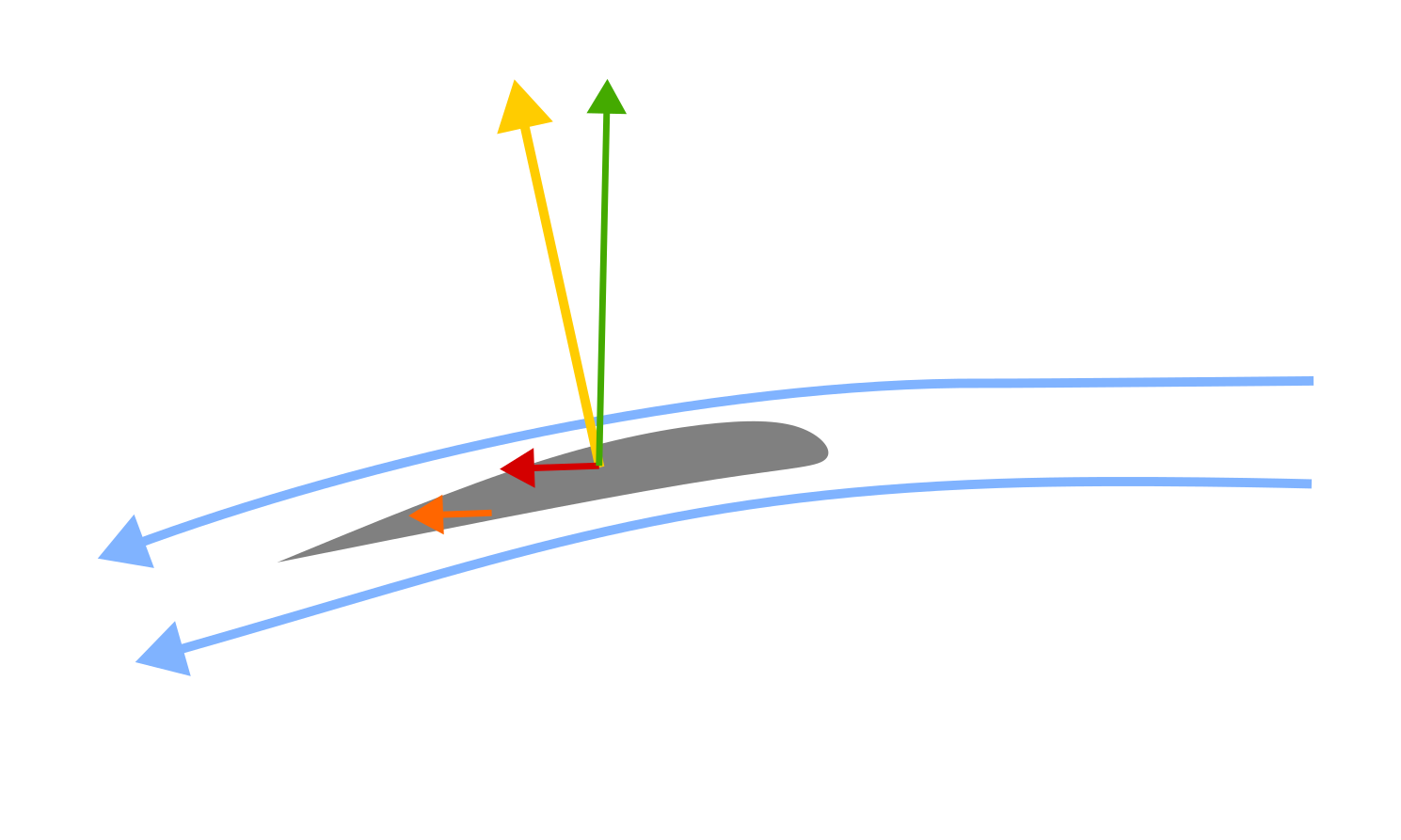A wing's shape allows it to deflect a large volume of air downwards while incurring a small amount of drag, which in turn means a relatively small amount of thrust (compared to the weight of the plane) is required to push it forwards. The critical value involved is the lift-to-drag ratio, which varies based on a number of factors but might be 60:1 for gliders or 20:1 for airliners.1
Perhaps an intuitive way to understand how this is possible is with a diagram. In this simplified representation, the wing is the gray box and it's moving to the right, so the blue arrows represent the direction the air is flowing relative to it.

As the wing moves through the air at an angle, it will produce a force perpendicular to itself (the yellow arrow). At low angles of attack (that is, the angle between the direction the wing is pointing and the direction the plane is moving), you can see that the vertical component (lift, colored green) is much greater than the horizontal component (lift-induced drag, red). There some additional "parasitic" drag created even if the wing is pointing straight into the wing (orange arrow), but even if you add this onto the induced drag, the lift is still much greater than the total drag.
Now for your second question: If you increase the wingspan (and in turn wing area), you will increase the lift at a given airspeed, but you will also increase the drag as there is now more wing area that has to be pushed through the air. This will reduce the top speed of the aircraft but will probably allow it to fly at a lower airspeed. The ratio of lift to drag actually will improve slightly due to what happens when aspect ratio (the ratio of wingspan to the distance from front to back of the wing)
is increased - see here for a detailed explanation. This is the reason for gliders having extremely skinny wings.
Answering your third question is tricky, as it depends on a number of factors, but my intuition says increasing the wingspan should result in less power required to get off the ground, up to a point. Longer wings are weaker, so they will need more structural weight to support them. There will come a point where the extra lift generated by adding more wingspan will not be worth the weight and drag caused. I suggest an optimized design would be something along the lines of human-powered aircraft like the Gossamer Albatross, as these have to work around the low power-to-weight ratio of humans.
1. These numbers are actually lift-to-drag ratios for the whole plane (so including the drag from the body), so the lift-to-drag ratio of the wing itself is actually a little bit better. The ratio for the whole plane is what matters when trying to calculate how much thrust it needs to make a certain amount of lift, so that's why I've used it here.


